check engine NISSAN GT-R 2020 Owners Manual
[x] Cancel search | Manufacturer: NISSAN, Model Year: 2020, Model line: GT-R, Model: NISSAN GT-R 2020Pages: 1552, PDF Size: 4.31 MB
Page 81 of 1552
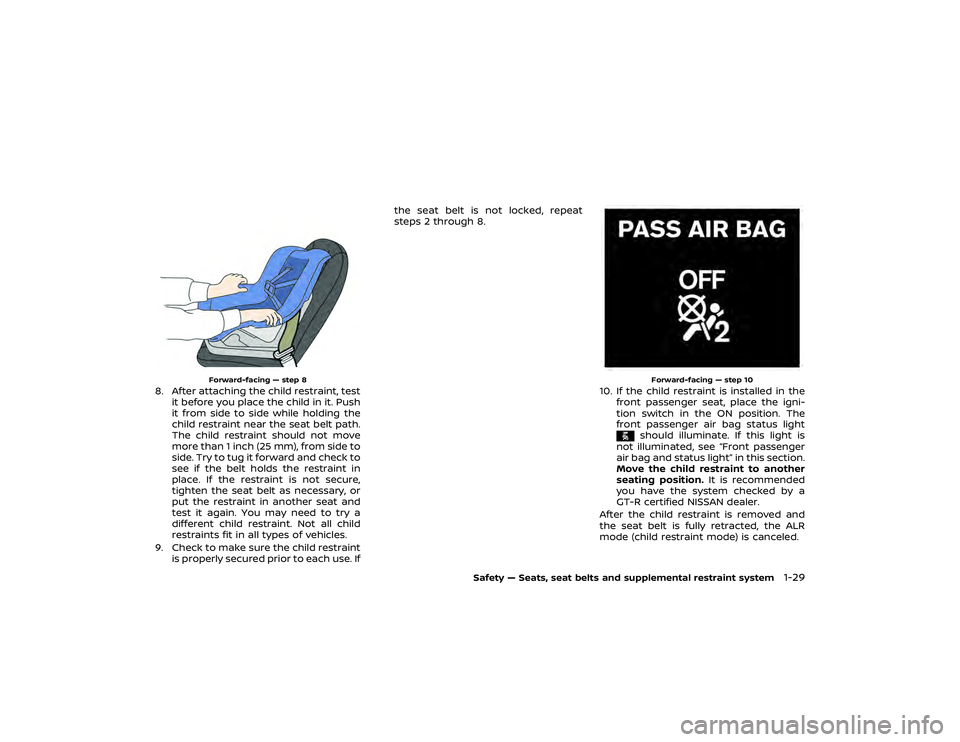
Checking engine coolant level .................. 8-11
Draining of coolant water ............................ 5-56
Engine coolant temperature gauge ........ 2-8
Coolant level and mixture ratio ................ GTR-15
Corrosion protection ................................................... 7-9
Cracks on brake pad ......................................... GTR-27
Cracks on the disc rotors .............................. GTR-27
Cruise control ................................................. 2-17, 5-34
Cruise control operations .................................... 5-36
Cruise control system warning ....................... 2-42
Cup holders ..................................................................... 2-59
Current fuel consumption ................................... 2-16
D
Page 163 of 1552
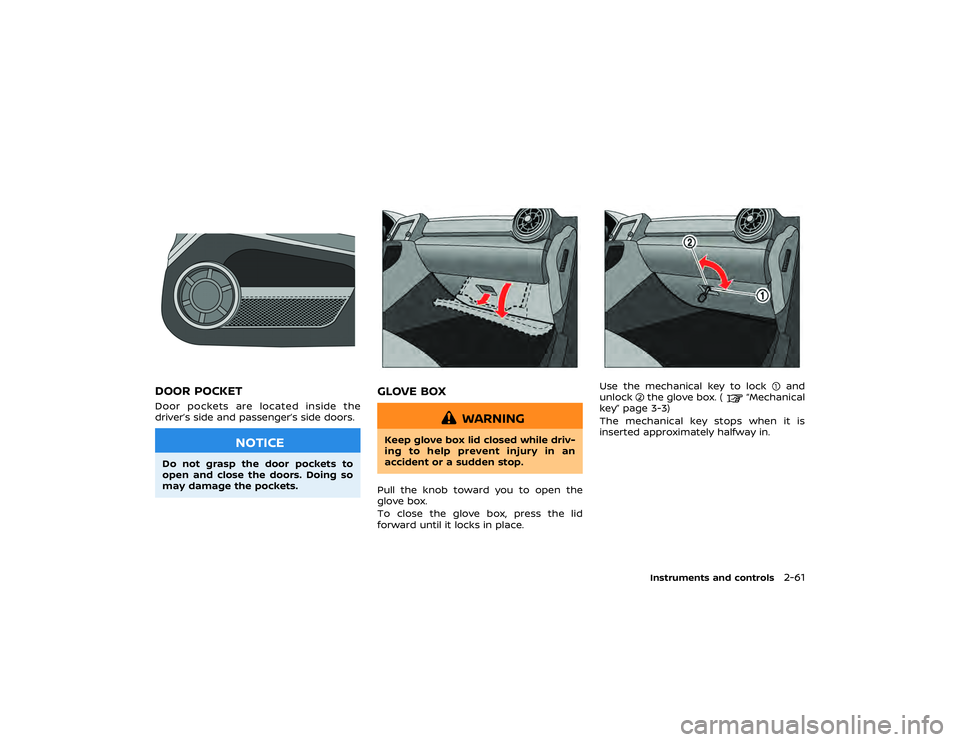
However, the brake pads can be sepa-
rately replaced only when a GT-R certified
technician judges that the brake disc
rotors are reusable, based on a measured
weight and a check for scratches and
cracks.EXHAUST MUFFLER AND TRUNK
CARPETThe GT-R exhaust system is designed to
provide the maximum vehicle perfor-
mance and to protect the vehicle from
high exhaust gas temperatures.
If non-genuine GT-R exhaust system
parts are used it is possible that the
muffler or other exhaust system parts will
deform and cause damage to the under-
body. Non-genuine GT-R exhaust system
parts can also affect vehicle performance
and possibly lead to turbocharger, engine
or power train related parts including
transmission, damage.
Also, do not remove the trunk carpet from
the vehicle for any reason. The carpet
insulates the vehicle interior from the
heat of the muffler and from the noise
of the transmission.
TITANIUM MUFFLER AND TRUNK
CARPET (if so equipped)
NOTICE
Never allow polishes with com-
pounds, because there is a possibi-
lity that the titanium muffler finisher
coloring will be changed.
GT-R Overview
GTR-7
Page 172 of 1552
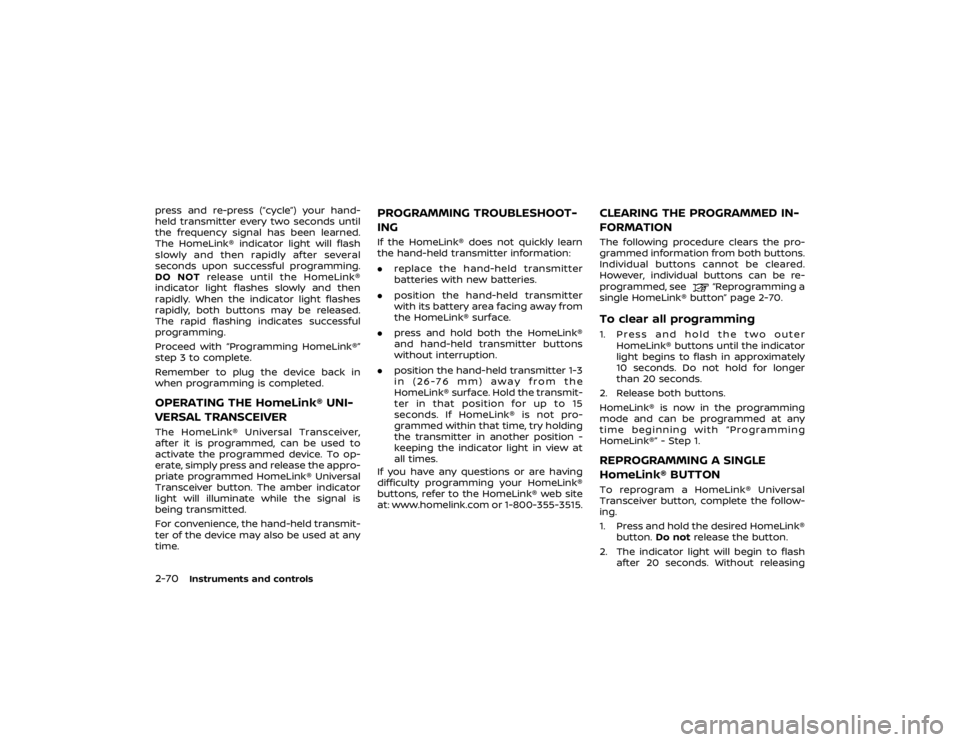
Check the coolant level in the pressurized
coolant reservoir. Adjust the level so that
the fluid is between the MAX and MIN
markings. For the coolant, use genuine
NISSAN Long Life coolant or equivalent.
(On delivery of new vehicle, the reservoir
is filled to the MIN level. Be sure to
replenish approximately 3/8 US quart
(0.3 to 0.4 liter) of coolant.)
NOTICE
Do not overfill the coolant. This may
increase the pressure in the cooling
system and cause coolant leaks.
To maximize vehicle performance, the
coolant mixture ratio should be a combi-
nation of 30% coolant antifreeze and 70%
demineralized or distilled water for max-
imum cooling system performance re-
gardless of ambient temperatures.
If ambient temperatures are anticipated
below 5°F (−15°C), make sure a proper
mixture ratio of 50% antifreeze and 50%
demineralized or distilled water mix is
used.Engine and powertrain
NOTICE
Failure to have the clutch properly
adjusted before performance driving
may cause the transmission oil tem-
perature to increase which may
cause transmission damage.
. Inspect and confirm the clearance
between the exhaust finisher and rear
bumper is more than 0.24 in (6 mm)
(up/down) and more than 0.20 in (5
mm) (left/right).
. Inspect the dust boot of the drive
shaft universal joint for cracks or
damage.Suspension and wheel alignmentThe information and specifications in
this section apply only when engaging
in performance driving.
.Check the steering and suspension
system and other links for loose and/
or damaged parts.
. Measure and adjust the wheel align-
ment. (
Page 175 of 1552
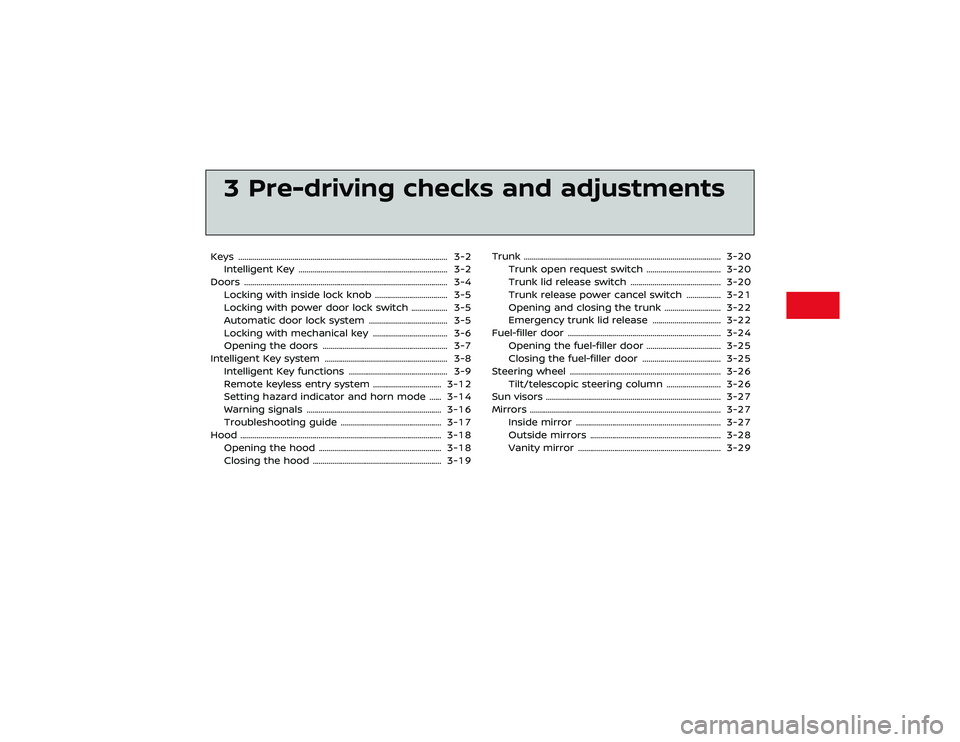
in this section for 48 hours after tires
are installed on the wheels. The tire
may slip on the wheel if the vehicle is
driven in these conditions before 48
hours have passed. If the tire slips on
the wheel, the wheel/tire assembly
will be out of balance and will require
rebalancing.
BrakesThe information and specifications in
this section apply only when engaging
in performance driving.
.Check for the heat deterioration of the
brakes and parts around the brakes.
. It is recommended that you remove
air from the brake system after any of
the following:
— When engaging in high perfor-
mance driving for the first time
after purchasing a new vehicle.
— After replacing the brake fluid.
— When engaging in high perfor- mance driving for a sustained per-
iod of time. It is recommended that
bleeding the brake be performed
when the brake calipers are hot
(about 212°F (100°C)). Brake pad break-in procedure:
NISSAN recommends that a special brake
pad break-in procedure be performed
before engaging in performance driving.
It is recommended you contact a GT-R
certified NISSAN dealer for details.
INSPECTION AND ADJUSTMENTS
AFTER DRIVINGThe information and specifications in
this section apply only when engaging
in performance driving.
NOTICE
At the completion of performance
driving, all fluid and other adjust-
ments should be returned to the
normal fluid specifications as shown
in the “Maintenance and do-it-your-
self” section of this manual.FluidsThe information and specifications in
this section apply only when engaging
in performance driving.
.
Check the engine, transmission, differ-
ential and under the vehicle for oil and
coolant leaks. .
Check the fluid levels and adjust as
necessary using the specified fluid as
described under the conditions listed
in this section. (
Page 377 of 1552
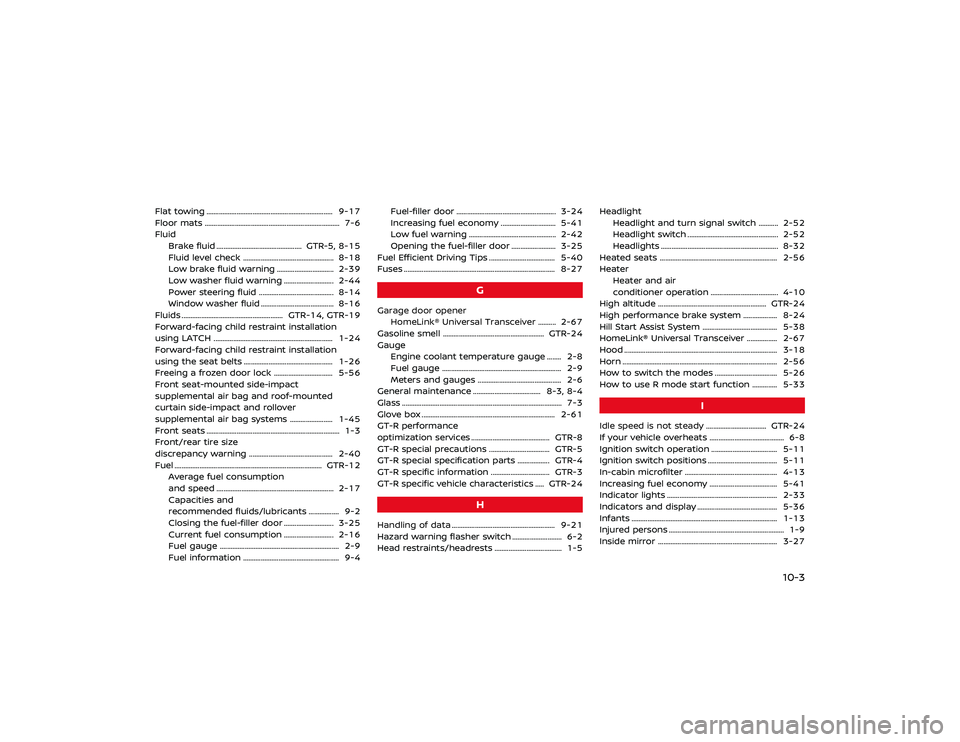
Check the coolant level in the pressurized
coolant reservoir. Adjust the level so that
the fluid is between the MAX and MIN
markings. For the coolant, use genuine
NISSAN Long Life coolant or equivalent.
(On delivery of new vehicle, the reservoir
is filled to the MIN level. Be sure to
replenish approximately 3/8 US quart
(0.3 to 0.4 liter) of coolant.)
NOTICE
Do not overfill the coolant. This may
increase the pressure in the cooling
system and cause coolant leaks.
To maximize vehicle performance, the
coolant mixture ratio should be a combi-
nation of 30% coolant antifreeze and 70%
demineralized or distilled water for max-
imum cooling system performance re-
gardless of ambient temperatures.
If ambient temperatures are anticipated
below 5°F (−15°C), make sure a proper
mixture ratio of 50% antifreeze and 50%
demineralized or distilled water mix is
used.Engine and powertrain
NOTICE
Failure to have the clutch properly
adjusted before performance driving
may cause the transmission oil tem-
perature to increase which may
cause transmission damage.
. Inspect and confirm the clearance
between the exhaust finisher and rear
bumper is more than 0.24 in (6 mm)
(up/down) and more than 0.20 in (5
mm) (left/right).
. Inspect the dust boot of the drive
shaft universal joint for cracks or
damage.Suspension and wheel alignmentThe information and specifications in
this section apply only when engaging
in performance driving.
.Check the steering and suspension
system and other links for loose and/
or damaged parts.
. Measure and adjust the wheel align-
ment. (
Page 399 of 1552

.If the AWD warning light blinks on
when you are driving:
— blinks rapidly (about twice a
second):
Pull off the road in a safe area,
and idle the engine. The driv-
ing mode will change to RWD
to prevent the AWD system
from malfunctioning. If the
warning light turns off, you
can drive again. This does
not indicate that there is a
malfunction.
— blinks slowly (about once every 2 seconds):
Pull off the road in a safe area,
and idle the engine. Check
that all tire sizes are the same
as that specified on the Tire
and Loading Information label
located in the driver’s door
opening, tire pressure is cor-
rect and tires are not worn.
(
Page 422 of 1552

in this section for 48 hours after tires
are installed on the wheels. The tire
may slip on the wheel if the vehicle is
driven in these conditions before 48
hours have passed. If the tire slips on
the wheel, the wheel/tire assembly
will be out of balance and will require
rebalancing.
BrakesThe information and specifications in
this section apply only when engaging
in performance driving.
.Check for the heat deterioration of the
brakes and parts around the brakes.
. It is recommended that you remove
air from the brake system after any of
the following:
— When engaging in high perfor-
mance driving for the first time
after purchasing a new vehicle.
— After replacing the brake fluid.
— When engaging in high perfor- mance driving for a sustained per-
iod of time. It is recommended that
bleeding the brake be performed
when the brake calipers are hot
(about 212°F (100°C)). Brake pad break-in procedure:
NISSAN recommends that a special brake
pad break-in procedure be performed
before engaging in performance driving.
It is recommended you contact a GT-R
certified NISSAN dealer for details.
INSPECTION AND ADJUSTMENTS
AFTER DRIVINGThe information and specifications in
this section apply only when engaging
in performance driving.
NOTICE
At the completion of performance
driving, all fluid and other adjust-
ments should be returned to the
normal fluid specifications as shown
in the “Maintenance and do-it-your-
self” section of this manual.FluidsThe information and specifications in
this section apply only when engaging
in performance driving.
.
Check the engine, transmission, differ-
ential and under the vehicle for oil and
coolant leaks. .
Check the fluid levels and adjust as
necessary using the specified fluid as
described under the conditions listed
in this section. (
Page 469 of 1552

.If the AWD warning light blinks on
when you are driving:
— blinks rapidly (about twice a
second):
Pull off the road in a safe area,
and idle the engine. The driv-
ing mode will change to RWD
to prevent the AWD system
from malfunctioning. If the
warning light turns off, you
can drive again. This does
not indicate that there is a
malfunction.
— blinks slowly (about once every 2 seconds):
Pull off the road in a safe area,
and idle the engine. Check
that all tire sizes are the same
as that specified on the Tire
and Loading Information label
located in the driver’s door
opening, tire pressure is cor-
rect and tires are not worn.
(
Page 692 of 1552

This vehicle contains Genuine NISSAN
Long Life Antifreeze/Coolant (blue). The
life expectancy of the factory-fill coolant
is 24,000 miles (38,400 km) or 2 years.
Mixing any other type of coolant or the
use of non-distilled water will reduce the
life expectancy of the factory-fill coolant.
Refer to the GT-R Service and Mainte-
nance Guide for more details.
If the cooling system frequently re-
quires coolant, it is recommended you
have it checked by a GT-R certified
NISSAN dealer.
Check that the level of coolant is between
MAX and MIN on the pressurized radiator
reservoir. If the level is below the mid-
point, the amount of coolant circulating
may be insufficient for maximum vehicle
performance, possibly causing engine
overheating or other trouble.
For the coolant level and mixture ratio
when engaging in performance driving,
see
Page 736 of 1552

However, the brake pads can be sepa-
rately replaced only when a GT-R certified
technician judges that the brake disc
rotors are reusable, based on a measured
weight and a check for scratches and
cracks.EXHAUST MUFFLER AND TRUNK
CARPETThe GT-R exhaust system is designed to
provide the maximum vehicle perfor-
mance and to protect the vehicle from
high exhaust gas temperatures.
If non-genuine GT-R exhaust system
parts are used it is possible that the
muffler or other exhaust system parts will
deform and cause damage to the under-
body. Non-genuine GT-R exhaust system
parts can also affect vehicle performance
and possibly lead to turbocharger, engine
or power train related parts including
transmission, damage.
Also, do not remove the trunk carpet from
the vehicle for any reason. The carpet
insulates the vehicle interior from the
heat of the muffler and from the noise
of the transmission.
TITANIUM MUFFLER AND TRUNK
CARPET (if so equipped)
NOTICE
Never allow polishes with com-
pounds, because there is a possibi-
lity that the titanium muffler finisher
coloring will be changed.
GT-R Overview
GTR-7